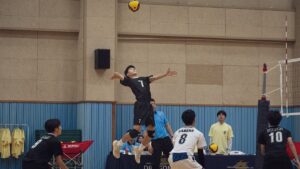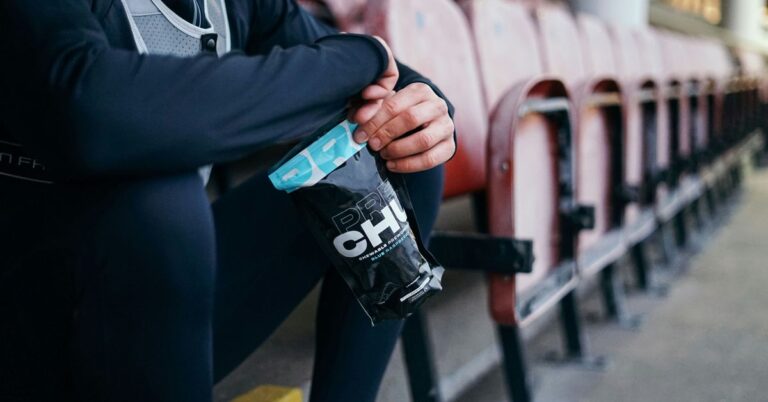Unveil the Conditioning Secrets That Elite Athletes Use for Peak Performance in Any Sport
In the world of sports, the difference between winning and losing often boils down to how well an athlete can condition their body and mind for peak performance. This is not just about hitting the gym or logging miles on the road; it’s about a nuanced, tailored approach that elite athletes employ to elevate their game to extraordinary levels. Have you ever found yourself wondering what sets the best apart from the rest? Well, let’s dive into the conditioning secrets that might just hold the key to unlocking your own potential—whether you’re a weekend warrior or an aspiring Olympian.
The Foundation of Conditioning: Understanding the Basics
Before we delve into the nitty-gritty, it’s essential to grasp the foundational principles of athletic conditioning. Think of conditioning as a framework that encompasses strength, endurance, flexibility, and mental fortitude. Sure, every athlete has their unique flair—some may excel in speed, while others dominate with agility—but at the core, they all rely on a robust conditioning program.
Here’s a quick breakdown of the four pillars:
- Strength: Building muscle power is crucial for almost all sports. Whether you’re sprinting, swimming, or shooting hoops, strength training is a must.
- Endurance: This is your body’s ability to sustain prolonged physical activity. Long-distance runners and cyclists often prioritize this aspect.
- Flexibility: Maintaining a full range of motion can help prevent injuries. Think yoga for athletes—yes, even the toughest among us benefit from a good stretch!
- Mental Fortitude: Often overlooked, mental conditioning can be just as important as physical training. Visualization techniques, mindfulness, and focus strategies are integral to maintaining composure under pressure.
Each athlete may weigh these components differently, but the blend creates a holistic approach that is necessary for anyone serious about sports. I remember chatting with a former Olympic swimmer who emphasized that while everyone was busy cranking out laps, the real magic happened during the mental preparation sessions. Who knew?
Strength Training: Building the Engine
Let’s kick things off with strength training. This is where the heavy lifting happens—quite literally. Elite athletes employ a variety of methods to build strength, and it’s not merely about bench presses and squats (though those are essential too). Many incorporate high-intensity interval training (HIIT) and functional movements that mimic the specific actions of their sport.
For instance, a football player may focus on explosive movements like box jumps and kettlebell swings, while a gymnast might benefit from bodyweight exercises that improve not just strength, but also balance and coordination. And let’s not forget about the power of resistance bands and medicine balls—tools often overlooked by the average gym-goer.
Consider the case of track and field athletes. Their strength training routines often include Olympic lifts, which not only build raw power but also enhance their overall athletic performance. “It’s about more than just getting strong,” a coach once told me. “It’s about developing the right kind of strength that translates into your sport.” Wise words indeed!
Endurance: The Long Game
Now, endurance is where many athletes often find their limits tested. The key to effective endurance training lies in blending long, slow distance runs with shorter, more intense interval sessions. This combination helps in building a strong aerobic base while also improving your anaerobic capacity. Sounds fancy, right? But the science is straightforward.
Take the marathon runner, for example. Their training consists of long runs on weekends, complemented by tempo runs during the week. The latter helps them get comfortable with faster paces, preparing their bodies for race day. A lot of people think it’s all about logging miles, but it’s the quality of those miles that really counts.
One memorable conversation I had with a triathlete revealed the importance of cross-training in building endurance. “Swimming and cycling are great for recovery,” she said, “but they also help improve my running without putting too much stress on my joints.” It struck me that athletes are not just one-dimensional; they’re often multi-faceted, incorporating various disciplines to enhance their performance.
Flexibility: The Unsung Hero
Flexibility often gets the short end of the stick, but it’s vital for both performance and injury prevention. Elite athletes incorporate dynamic stretching in their warm-ups and static stretching in their cool-downs. Moreover, many athletes find that practices like yoga or pilates can enhance their core stability, balance, and overall flexibility.
For example, consider a professional dancer. Their conditioning routine often includes extensive flexibility work. Yet, it’s not just about being able to do the splits; it’s about achieving a fluidity of movement that allows for performance without restriction. I once attended a dance workshop where the instructor emphasized that flexibility doesn’t just improve movement—it also boosts confidence, which is equally crucial in competitive sports.
Mental Conditioning: The Game-Changer
Ah, the mind. Often underestimated, but undoubtedly a game-changer. Mental conditioning is a realm that can make or break an athlete’s performance. Visualization techniques, breathing exercises, and mindfulness training can all be incorporated into an athlete’s regimen. These practices help athletes stay focused and calm, especially in high-pressure situations.
One of my favorite anecdotes comes from a renowned sports psychologist who worked with a top-tier tennis player. “Before every match, we would spend a good fifteen minutes just visualizing the game,” he explained. “It’s about programming your brain to respond positively to pressure.” The next time you’re tempted to roll your eyes at the thought of mental training, remember that even the most elite athletes rely on it!
The Role of Nutrition
No discussion about peak performance would be complete without addressing nutrition. After all, you wouldn’t fuel a high-performance car with regular gas, right? Elite athletes adhere to strict nutritional guidelines, tailored to their specific needs. A good diet typically includes a balance of macronutrients—carbohydrates for energy, proteins for muscle repair, and fats for overall health.
Some athletes swear by meal-prepping to maintain their dietary discipline. I once met a professional cyclist who meticulously planned his meals for the week, which helped him stay on track amidst a busy training schedule. “It’s all about consistency,” he said, “and if I can control my diet, I can control my performance.”
Rest and Recovery: The Overlooked Aspects
Now, let’s talk about the often-ignored component of conditioning—rest and recovery. It’s easy to fall into the trap of thinking more training equals better performance, but that’s not always the case. Rest days are when your body repairs and strengthens itself. Without proper recovery, all that hard work in the gym could go to waste.
Elite athletes often incorporate active recovery days, where they engage in low-intensity activities like walking or yoga. This not only aids recovery but also helps maintain mobility. Some athletes even explore advanced recovery techniques, such as cryotherapy or massage therapy, to help speed up the process. I remember watching a documentary on a professional soccer team, where players would routinely jump into ice baths after grueling matches. Talk about dedication—and a little bit of insanity!
Incorporating Technology: The Modern Edge
In our tech-driven world, athletes are increasingly leveraging technology to enhance their training. Wearable devices, apps, and specialized software provide valuable data, helping athletes monitor their performance and recovery. This data-driven approach allows for personalized training regimens, which can be adjusted based on real-time feedback.
For instance, many runners now use GPS watches to track their pace and distance. These devices provide insights into their training patterns, helping them optimize their workouts. I once chatted with a marathon runner who shared how analyzing his heart rate data helped him avoid overtraining and injury. It’s remarkable how technology can empower athletes to take control of their conditioning!
Putting It All Together: A Holistic Approach
As we’ve explored, the conditioning secrets of elite athletes encompass a wide array of techniques and strategies. It’s not merely a checklist of exercises or diets; it’s about creating a holistic approach that integrates strength, endurance, flexibility, mental fortitude, nutrition, rest, and technology. Each component plays a role in the grand symphony that is peak performance.
What’s fascinating is that every athlete will find their unique recipe for success. You might be a basketball player who thrives on agility drills, while a swimmer might prioritize endurance training. The beauty lies in the individuality of each athlete’s journey—there’s no one-size-fits-all manual. I remember my own attempts at conditioning—each misstep and success taught me invaluable lessons that shaped my understanding of what it takes to perform.
Final Thoughts: Your Path to Peak Performance
As we wrap up this exploration of conditioning secrets, it’s essential to remember that every journey starts with a single step—or a single rep, if you will. Whether you’re an aspiring athlete or a seasoned competitor, embracing these principles can lead to noticeable improvements in your performance.
So, what are you waiting for? It’s time to lace up those shoes, grab that dumbbell, and perhaps even meditate a little. Peak performance is not just a dream; it’s a goal within reach, waiting for you to seize it. After all, as the saying goes, “The only bad workout is the one that didn’t happen.” Now go out there and unleash your inner champion!













